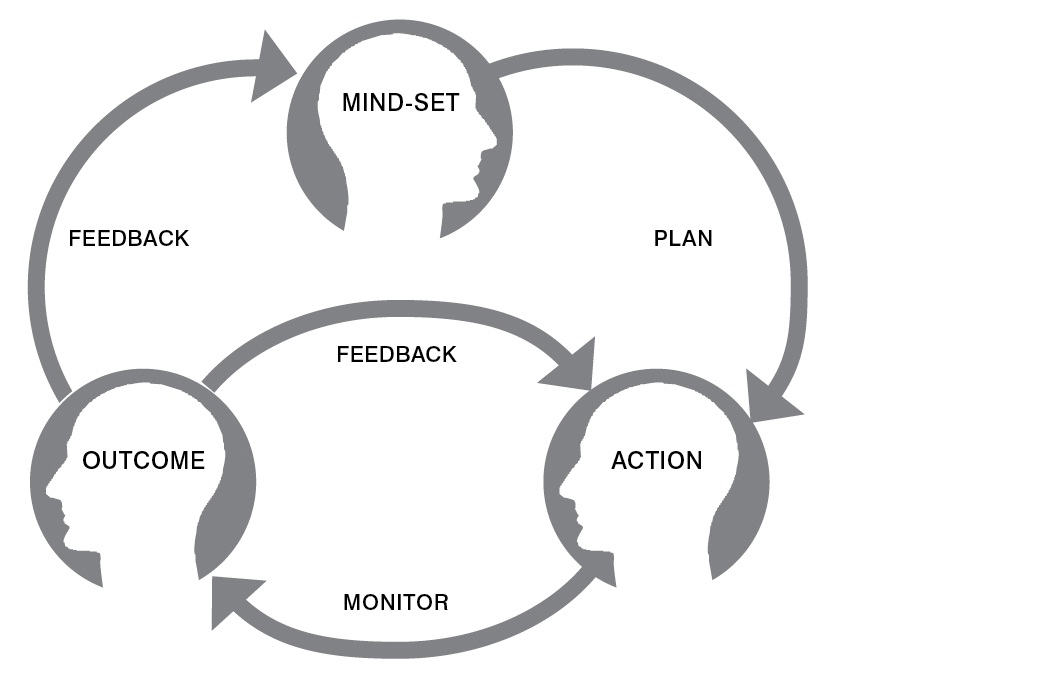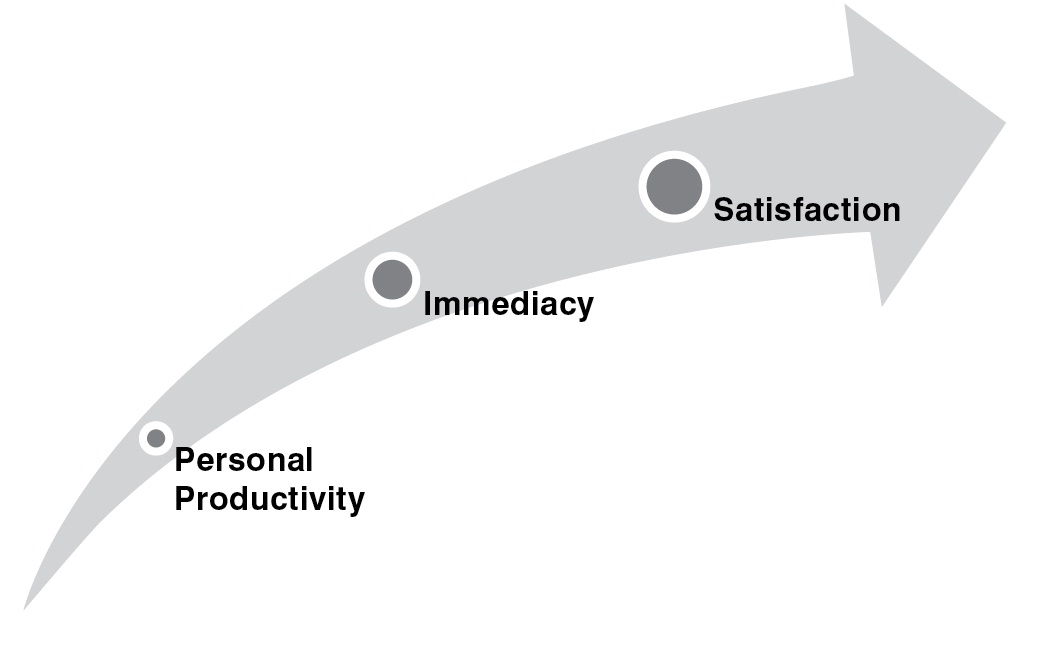Alstom University’s distance learning manager Annee Bayeux debates with Skill-Pill CEO Gerry Griffin about the kinds of conditions corporates need to implement of a mobile learning strategy.
What are some of the fundamental unmet needs of an organisation that mobile learning can address?
Annee: A basic need is around accessibility and the idea of just-in-time training. Pressures of work mean some executives just can’t commit the time and some end up with no training at all. So mobile learning can help to fill that gap.
Gerry: A second driver is recouping some of the massive investment made in face-to-face training. If you have content retention decay of up to 90% over the course of a year, mobile devices can help refresh and recall that. So I don’t see the mobile device as a training device, I see it as a memory retrieval mechanism.

Annee: The booster shot for face-to-face training is definitely relevant. But with good instructional design you can also introduce new ideas that need to be communicated and that are task-driven. You can’t introduce something new with 15 minutes segments on a mobile. Even when the scope of the material is good, you have to break it into 15 little pieces to be really effective.
Do you need a bourgeoning e-culture of collaboration, to ease the introduction of mobile learning?
Gerry: Without senior management interest – ideally a board-level champion – you’re dead basically. You also need to have an intuitive response from management to the mobile proposition i.e. that you think, "alright, this is smart, this is what we need around here", without having to deconstruct it too much. Effective collaboration between departments is essential. Implementation is a multi-functional approach, and you almost have to crab walk your way into an organisation.
With so many departments involved you do need the ability of a senior driver to clunk heads together to make it happen. Finally, you need to have realistic expectations. A third of people will get it, like it early on, get into it and use it. Your second third will sit on the fence, and your final third will be resistors. Your job is to help the organisation convert the second third by marketing and explaining it properly.
Annee: Understanding your end user culture is important. 60% of our population at Alstom have an engineering background, which lends itself to the digital native profile that we’re looking for. They are always the early adopters of mobile content and actually expect it to be on a mobile device. Our culture of training and learning is what we would call self-directed. In other words, I’m not going to wait for Alstom University to give me a course to learn.
This is the idea of pulling my learning towards me. As an individual user, I have a reflex to pool content. If I don’t know something, I’m going to search the internet or paper manual and look for it. It is this reflex we’re trying to encourage in people, which is independent of technology. The push-pull paradigm is actually very, very important when we’re trying to get people to begin using mobile learning.
What are the key business priorities that a mobile learning strategy should be looking to address?
Gerry: Sales staff is a real sweet spot. If you can get senior sales people using some of the tools that they’ve set up, to tell their colleagues about, for example, ‘How to Win in 50 Tight Corners’, then you’re in a great space. We’ve set up this system with Dell: One of their sales reps referred to the IT industry as being, and I quote, "like a knife fight in a phone box, you have to know what you are doing". Selling corporate IT is a tough business, and we have found that sales folks respect other successful sales people, and want to hear from their peers as to how they go about selling and learn from other’s experience.
That type of collaborative learning, rather than broadcast-type training or instruction, is what they really want to hear. Experienced sales reps don’t want to hear about how to do an assumptive close. They want to know about how to deal with specific objections at a particular moment in time. And the ability to turn around content and push it back out, and enable it to free-flow in an ‘on the go’ kind of style is absolutely perfect.
Other areas are compliance and ethics. Some people have to go through this training, and that’s not a great way to learn. When we talk to learning departments about ethics training, the phrase ‘pinpoint my ethics learning’ springs to mind. And that, to a degree, is what mobile can do. It can make it entertaining, out there, and relevant to decisions people are taking.
Annee: The other area is environment – health and safety especially – where compliance standards are high, and variation is considerable between tasks, plants and factories. And regulations apply not just to regular employees but to visitors too. 

We need to have quick modules that are going to teach people about a specific plant. The elearning approach takes too long and is too costly. Mobile learning has a lower cost of production.
The content is more flexible and can easily be broken into areas of relevancy. We’re developing training modules on how to begin the tour of the plant, but when we get over into a specific area we can just all look on our iPads notebooks, or our cell phones to look at the content for the machine in front of us. The training can be a more impactful when it’s put into context like that.
Gerry: We’re teaming up with a company called Heartbeat, who does health and safety training. We’re going to trial QR codes in various parts of facilities so that users can pull up 45 – 60 second reminders of types of behaviour that are required in this part of the facility. The system is ‘tag-able’ and trackable, and is a fantastic use of context, technology and reminding people of the behaviours that they know already but don’t always follow.
What sort of return on investment should organisations be looking for?
Gerry: Mobile learning lends itself to good measurement because it’s connected to a device. It’s contextual and you can get feedback, and perhaps measure performance levels more accurately than classroom-based learning, in which there is an inevitable distance, geographically and chronologically, between the moment of learning and the application.
We love starting dialogues about ROI. We try and focus on productivity improvement and content retention. From our studies to date, we’ve seen up to a 10% improvement on the productivity of individuals. But for that 10% increase to be accurate, it has to be based on an organisation’s current metrics. But the reality is few organisations measure the ROI from their current learning programs.
Annee: The complication is that sometimes we are not able to measure the impact of training. There are great learning outcomes that are measurable, such as a reduction in the number of injuries at work. It’s a major question in training today as to how we measure the impact of learning, especially when we’re talking about the fuzzy sciences. How do we measure the benefits of being a good leader?
Gerry: Would it be logical to transpose the productivity gains or the measures of technical training into the softer subjects? So for example, if we’re able to say that a good deployment of mobile learning adds 5% value to our technical training, would it be feasible to say that we could expect the same type of returns on the fuzzier science, as you say?
Annee: That’s a good point. We’ve developed three key performance indicators of training effectiveness, which are distinct from the actual content of the training. These were, impact on personal productivity; immediacy and satisfaction of having relevant knowledge and information immediately to hand; and impact on workflow to go and find information you need to carry out your task. These measures are all leaning towards productivity but they are not exactly the same thing. These three measures are the most important and the most relevant for the specific middle and senior management populations that we have.

part 1 of the Skill Pill series can be read here
Annee Bayeux is Alstom University’s distance learning manager. Gerry Griffin is CEO of Skill-Pill M-Learning
Alstom University's distance learning manager Annee Bayeux debates with Skill-Pill CEO Gerry Griffin about the kinds of conditions corporates need to implement of a mobile learning strategy.
What are some of the fundamental unmet needs of an organisation that mobile learning can address?
Annee: A basic need is around accessibility and the idea of just-in-time training. Pressures of work mean some executives just can't commit the time and some end up with no training at all. So mobile learning can help to fill that gap.
Gerry: A second driver is recouping some of the massive investment made in face-to-face training. If you have content retention decay of up to 90% over the course of a year, mobile devices can help refresh and recall that. So I don't see the mobile device as a training device, I see it as a memory retrieval mechanism.

Annee: The booster shot for face-to-face training is definitely relevant. But with good instructional design you can also introduce new ideas that need to be communicated and that are task-driven. You can't introduce something new with 15 minutes segments on a mobile. Even when the scope of the material is good, you have to break it into 15 little pieces to be really effective.
Do you need a bourgeoning e-culture of collaboration, to ease the introduction of mobile learning?
Gerry: Without senior management interest – ideally a board-level champion – you're dead basically. You also need to have an intuitive response from management to the mobile proposition i.e. that you think, "alright, this is smart, this is what we need around here", without having to deconstruct it too much. Effective collaboration between departments is essential. Implementation is a multi-functional approach, and you almost have to crab walk your way into an organisation.
With so many departments involved you do need the ability of a senior driver to clunk heads together to make it happen. Finally, you need to have realistic expectations. A third of people will get it, like it early on, get into it and use it. Your second third will sit on the fence, and your final third will be resistors. Your job is to help the organisation convert the second third by marketing and explaining it properly.
Annee: Understanding your end user culture is important. 60% of our population at Alstom have an engineering background, which lends itself to the digital native profile that we're looking for. They are always the early adopters of mobile content and actually expect it to be on a mobile device. Our culture of training and learning is what we would call self-directed. In other words, I'm not going to wait for Alstom University to give me a course to learn.
This is the idea of pulling my learning towards me. As an individual user, I have a reflex to pool content. If I don't know something, I'm going to search the internet or paper manual and look for it. It is this reflex we're trying to encourage in people, which is independent of technology. The push-pull paradigm is actually very, very important when we're trying to get people to begin using mobile learning.
What are the key business priorities that a mobile learning strategy should be looking to address?
Gerry: Sales staff is a real sweet spot. If you can get senior sales people using some of the tools that they've set up, to tell their colleagues about, for example, 'How to Win in 50 Tight Corners', then you're in a great space. We've set up this system with Dell: One of their sales reps referred to the IT industry as being, and I quote, "like a knife fight in a phone box, you have to know what you are doing". Selling corporate IT is a tough business, and we have found that sales folks respect other successful sales people, and want to hear from their peers as to how they go about selling and learn from other's experience.
That type of collaborative learning, rather than broadcast-type training or instruction, is what they really want to hear. Experienced sales reps don't want to hear about how to do an assumptive close. They want to know about how to deal with specific objections at a particular moment in time. And the ability to turn around content and push it back out, and enable it to free-flow in an 'on the go' kind of style is absolutely perfect.
Other areas are compliance and ethics. Some people have to go through this training, and that's not a great way to learn. When we talk to learning departments about ethics training, the phrase 'pinpoint my ethics learning' springs to mind. And that, to a degree, is what mobile can do. It can make it entertaining, out there, and relevant to decisions people are taking.
Annee: The other area is environment - health and safety especially - where compliance standards are high, and variation is considerable between tasks, plants and factories. And regulations apply not just to regular employees but to visitors too. 

We need to have quick modules that are going to teach people about a specific plant. The elearning approach takes too long and is too costly. Mobile learning has a lower cost of production.
The content is more flexible and can easily be broken into areas of relevancy. We're developing training modules on how to begin the tour of the plant, but when we get over into a specific area we can just all look on our iPads notebooks, or our cell phones to look at the content for the machine in front of us. The training can be a more impactful when it's put into context like that.
Gerry: We're teaming up with a company called Heartbeat, who does health and safety training. We're going to trial QR codes in various parts of facilities so that users can pull up 45 - 60 second reminders of types of behaviour that are required in this part of the facility. The system is 'tag-able' and trackable, and is a fantastic use of context, technology and reminding people of the behaviours that they know already but don't always follow.
What sort of return on investment should organisations be looking for?
Gerry: Mobile learning lends itself to good measurement because it's connected to a device. It's contextual and you can get feedback, and perhaps measure performance levels more accurately than classroom-based learning, in which there is an inevitable distance, geographically and chronologically, between the moment of learning and the application.
We love starting dialogues about ROI. We try and focus on productivity improvement and content retention. From our studies to date, we've seen up to a 10% improvement on the productivity of individuals. But for that 10% increase to be accurate, it has to be based on an organisation's current metrics. But the reality is few organisations measure the ROI from their current learning programs.
Annee: The complication is that sometimes we are not able to measure the impact of training. There are great learning outcomes that are measurable, such as a reduction in the number of injuries at work. It's a major question in training today as to how we measure the impact of learning, especially when we're talking about the fuzzy sciences. How do we measure the benefits of being a good leader?
Gerry: Would it be logical to transpose the productivity gains or the measures of technical training into the softer subjects? So for example, if we're able to say that a good deployment of mobile learning adds 5% value to our technical training, would it be feasible to say that we could expect the same type of returns on the fuzzier science, as you say?
Annee: That's a good point. We've developed three key performance indicators of training effectiveness, which are distinct from the actual content of the training. These were, impact on personal productivity; immediacy and satisfaction of having relevant knowledge and information immediately to hand; and impact on workflow to go and find information you need to carry out your task. These measures are all leaning towards productivity but they are not exactly the same thing. These three measures are the most important and the most relevant for the specific middle and senior management populations that we have.

part 1 of the Skill Pill series can be read here
Annee Bayeux is Alstom University’s distance learning manager. Gerry Griffin is CEO of Skill-Pill M-Learning







